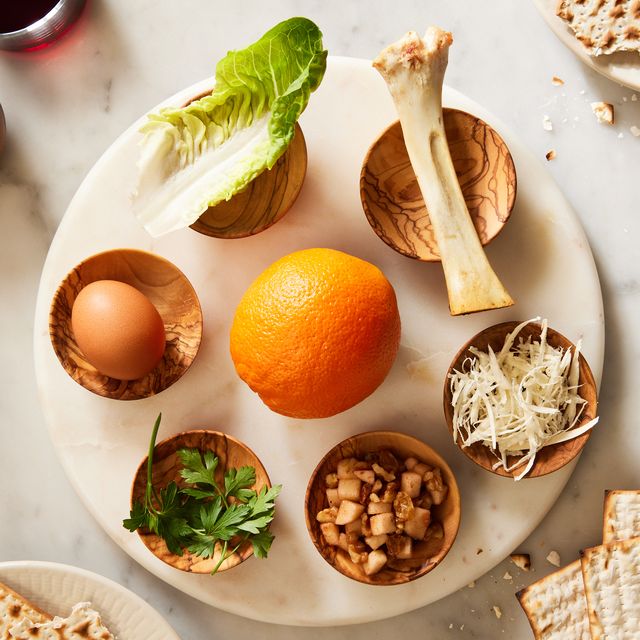Passover, or Pesach, celebrates the Israelites' escape from slavery in Egypt. The 8-day holiday starts on the 15th day of the Hebrew month Nisan when there's a full moon. The Hebrew calendar is tied to the lunar cycle, which is why the dates of Passover can vary from year to year. This year, Passover begins at sundown on Saturday, April 12, and ends at nightfall on Sunday, April 20.
The holiday is full of traditions, especially when it comes to food. The Seder, a ritual feast that occurs during the first two nights of Passover, features a symbolic Seder plate. In addition to the Seder plate, it's customary for each person at the table to drink four cups of kosher wine. Plenty of other traditional dishes, from appetizers to desserts, are passed around. Check out our favorite Passover recipes, ranging from traditional to modern, like matzo ball soup and our unique take on a kugel: Pastrami Matzo Kugel.
Now, what goes on a Seder plate? Here's what many of them include.
Charoset
Charoset is a medley of apples, walnuts, and raisins that's sweetened with honey, spices, and kosher wine. The spread represents the mortar (the binding agent used to fill the space between building blocks) that enslaved Jews used to build pyramids.
Beitzah (Egg)
A hard-boiled egg, or beitzah, is placed on the plate to symbolize the cycle of life and the hagigah sacrifice, the lamb sacrifice offered at Passover by Jews on their pilgrimages to the temple at Jerusalem, according to My Jewish Learning.
Zeroah (Shank Bone)
The shank bone (zeroah) on the Seder plate symbolizes the paschal lamb sacrifice made before the Exodus from Egypt, according to Chabad.org. This is one item on the plate that's not eaten.
Maror and Chazeret (Bitter Herbs)
Two bitter herbs—maror and hazeret—are used on the Seder plate to represent the bitterness of slavery. Many people use horseradish to represent maror and romaine lettuce for hazeret, according to My Jewish Learning.
Karpas (Green Vegetable)
Karpas symbolizes spring and the season's harvest. It also represents the flourishing of the Israelites when they first arrived in Egypt, before they were enslaved. Parsley is often used for this green vegetable.
Matzo
During Passover, chametz, or leavened bread, and baked goods aren't eaten, which makes matzo recipes popular during the holiday. Three pieces of matzo are also wrapped in a cloth and placed near the seder plate to represent the bread that could not rise when the Jewish people fled Egypt.
Salt Water
A bowl of salt water is placed near the Seder plate to represent the tears of the enslaved Jewish people. Parsely (or the karpas) is dipped into the salt water and eaten during the meal.
Optional: Orange
An orange on the Seder plate is a modern addition that symbolizes inclusion, particularly of LGBTQ+ Jews and other marginalized groups within the Jewish community, according to Like Bread on the Seder Plate: Jewish Lesbians and the Transformation of Tradition.












